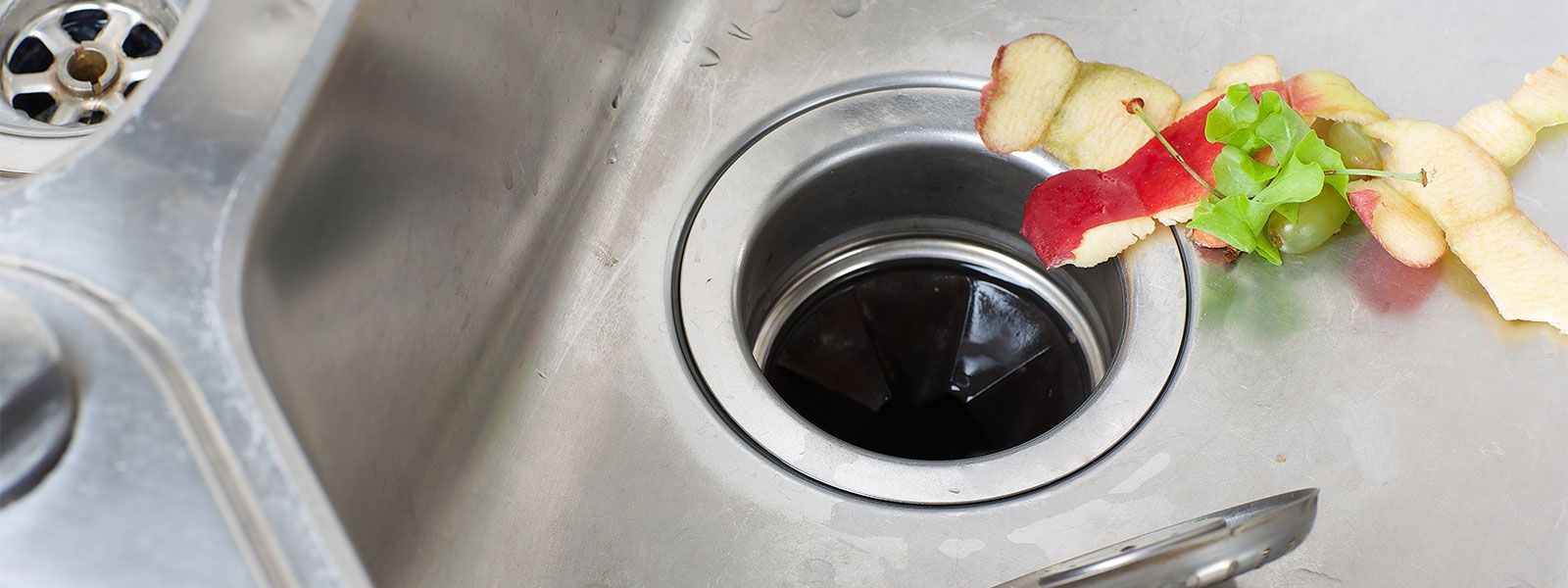Simple Instructions for Repairing a Leaky Waste Disposal
Simple Instructions for Repairing a Leaky Waste Disposal
Blog Article
The article author is making a few good observations about Why Is as a whole in the content down the page.

Waste disposal unit are crucial cooking area devices that assist in throwing away food waste effectively. However, a dripping garbage disposal can be an irritating and untidy problem to take care of. Thankfully, several leaks can be dealt with easily with a few basic actions. In this short article, we will certainly discuss exactly how to deal with a leaking garbage disposal successfully.
Intro
Garbage disposals are set up under cooking area sinks and are designed to shred food waste into smaller pieces, enabling it to go through the plumbing system quickly. While these gadgets are generally dependable, leaks can occur over time due to damage, loosened links, or damage to the unit.
Step-by-Step Guide to Repairing a Leaking Waste Disposal Unit
Switch off the Power
Before attempting any kind of repair services, make certain that the power to the waste disposal unit unit is shut off to prevent the threat of electric shock.
Situate the Leak
Recognize the precise location of the leak and determine the cause
Tighten Links
Use a wrench to tighten up any type of loose connections in between the disposal device and the plumbing system.
Change Seals or Gaskets
If the leak is because of used seals or gaskets, eliminate the old parts and change them with new ones.
Patching Fractures or Openings
For splits or holes in the disposal unit, use epoxy or an ideal patching product to secure the broken location.
Recognizing the Resource of the Leakage
Prior to trying to deal with a dripping waste disposal unit, it is necessary to identify the source of the leak. This can commonly be done via aesthetic assessment or by carrying out basic tests.
Visual Inspection
Inspect the waste disposal unit system thoroughly for any type of indications of water leak. Pay attention to areas around seals, gaskets, and link points.
Testing for Leakages
One way to examine for leaks is by running water through the disposal device and checking for any kind of visible indicators of leak.
Usual Root Causes Of Leakages in Trash Disposals
Worn Seals and Gaskets
Seals and gaskets play a vital duty in avoiding water from dripping out of the waste disposal unit. In time, these elements can wear away, leading to leaks around the disposal device.
Loose Links
The links between the garbage disposal and the plumbing system can become loosened with time, triggering water to leakage out throughout operation.
Cracks or Holes in the Disposal System
Physical damage to the garbage disposal, such as fractures or holes in the housing, can also result in leakages.
Devices and Products Needed for Taking Care Of a Dripping Garbage Disposal
Before starting the repair work process, collect the needed tools and products, consisting of a screwdriver, adjustable wrench, plumbing's putty, replacement seals or gaskets, and epoxy or patching product for fixing cracks or openings.
Evaluating the Waste Disposal Unit After Repair Service
Once the repair service is complete, check the waste disposal unit by running water through it to make sure that the leakage has been solved.
Preventive Maintenance Tips to Prevent Future Leakages
To prevent future leaks, it is necessary to execute normal maintenance on your garbage disposal. This includes keeping it tidy, staying clear of putting non-food items or hard items down the disposal, and regularly checking for leaks or other issues.
Conclusion
In conclusion, repairing a leaking garbage disposal is a relatively straightforward procedure that can be finished with basic devices and products. By complying with the steps outlined in this write-up and exercising precautionary maintenance, you can maintain your garbage disposal in good working condition and avoid costly fixings in the future.
What to Do About a Leaking Garbage Disposal
A leaking garbage disposal often goes unnoticed until you confront a sopping cabinet, a foul-smelling puddle, or an audible drip-drip-drip from the unit. The fix can be frustrating, too, because the leak can stem from a number of components in the system. Fortunately, with a little sleuthing, you can zero in on the leak and—depending on the exact location—stop the icky oozing and repair the component that caused it. Worst case scenario, if it turns out that the garbage disposal must be replaced, installing a new one is a reasonable do-it-yourself task for those with basic plumbing skills. Read on to keep the cash you’d otherwise hand over to a pro.
Prepare to find the leak
Prior to testing the garbage disposal for leaks, unplug it at the wall outlet and turn off the power from the breaker box to prevent electrical shock. Then insert a watertight sink stopper into your sink drain and wipe the unit dry with a clean cloth. In any handy container, mix a few drops of food coloring into a few cups of water, and pour the dyed water onto the sink stopper to help you locate the leak.
Investigate the source
the top, where the disposal meets the sink drain the side, where the dishwasher hose or main drain pipe connects to the disposal or the bottom of the unit Inspect each of these locations while gliding a light-colored rag over the unit; the dyed water will readily show on the rag and reveal the location of the leak. If a leak isn’t immediately apparent, remove the sink stopper and pour a few more cups of dyed water down the sink drain, then check for leaks again. Leaks near the top of the unit are more likely to show themselves while the sink is plugged, while side and bottom leaks are more noticeable while the sink is unplugged.
The metal sink flange that sits directly inside the sink drain is typically sealed around the top with plumber’s putty (a clay-like sealant) and then secured from under the sink with bolts. If the plumber’s putty deteriorates, or the bolts loosen, the flange can no longer form a watertight seal between the sink drain and the disposal—which could cause a leak at the top of the unit.
To reseal the leaky flange, you must first detach the garbage disposal. Start by loosening the screws securing the main drain pipe to the disposal, then loosen the screws in the metal clamp securing the dishwasher hose to the disposal and detach the drain pipe and dishwasher hose from the disposal. Loosen the screws in the mounting ring that connects the disposal to the metal mounting assembly beneath the sink, then pull down the disposal and carefully set it on a clean, dry surface. Loosen the bolts in the mounting assembly with a wrench, then pull down the mounting assembly and set it near the disposal.

Do you appreciate more info about Garbage Disposal Leaking From Bottom? Try leaving a short review directly below. We would be glad to find out your opinion about this page. Hoping that you come back again before long. If you liked our page plz make sure you remember to share it. Thank you for your time. Come back soon.
About This Report this page